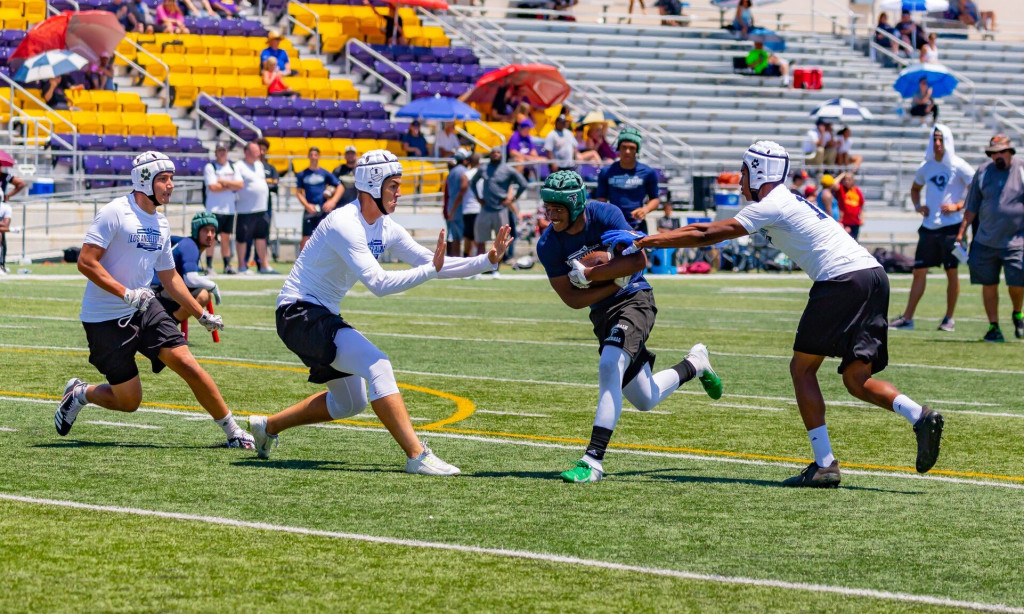USA TODAY | High School Sports February 28, 2019
HELMET REQUIREMENTS APPROVED BY TEXAS 7-ON-7 FOOTBALL ORGANIZATION
By Logan Newman
USA TODAY High School Sports

As 7-on-7 football continues its rapid spike in popularity, the Texas association has taken a step to make the sport safer.
In January, the Texas State 7on7 Organization passed a rule requiring players to wear soft-shell, cap-style helmets that have a four- or five-star rating by a Virginia Tech study. This rule will be implemented for the 2019 state tournament and the 2020 season.
“We want to be proactive, once again, in what we do to put our kids in a position to be safe more than anything else because this is just a game of touch football…”
Doug Stevens
Executive Director, Texas State 7on7 Organization
Texas 7on7 executive director Doug Stevens said setting a standard based on the Virginia Tech protocol was important because lesser helmets and headband-style protections can give a false sense of security.
“You could just put something on their head and say you’re protected, but that doesn’t mean they are,” Stevens said. “It was just a piece of cotton, a piece of foam, and said, ‘Hey, put this on your head and you’ll be protected’ – well that’s not true.”
As of the vote, the only company that achieved this four- or five-star rating is GameBreaker. Founder and CEO Mike Juels said the company has an exclusive softshell helmet deal with D3O, which creates shock-absorption technology used in helmets of different types including the military, motocross, and police.

Seven-on-seven football is a limited-contact, all-passing game. Now in its 22nd organized season in Texas, the sport was initially created as a way to work on offensive and defensive passing basics year-round while putting players in situations that can replicate pressure better than drills.
As the sport has grown, it’s becoming a recruitment tool for some athletes and schools.
“You have athletes participating in a lot of cases, at showcases where colleges are going to get the film, or they’re going to get the reviews from the 247s and the Scouts and the Rivals,” Juels said. “These kids are full-grown, and they’re going full speed, and they’re playing no different than if they were playing in a tackle football game, except where they’re going to tag off.”

Raymond Joyce Photography

